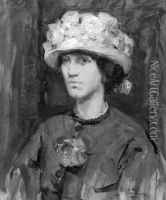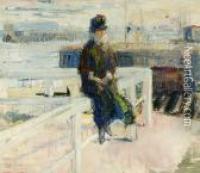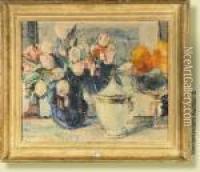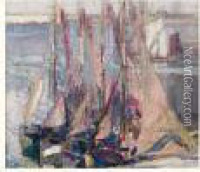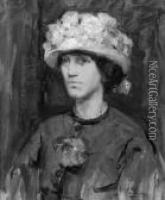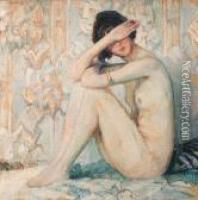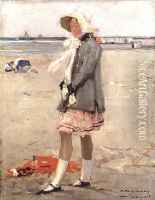Maurice Wagemans Paintings
Maurice Wagemans was a Belgian painter known for his contributions to the Art Nouveau movement. Born on August 21, 1877, in Brussels, Belgium, Wagemans developed an interest in art at a young age. He studied at the Royal Academy of Fine Arts in Brussels, where he honed his skills and was exposed to the prevailing artistic trends of the time.
During his career, Maurice Wagemans became particularly renowned for his depictions of women and floral compositions, often integrating both subjects in harmonious and decorative manners. His works are characterized by a delicate use of color and a flexible, often curvilinear line that was typical of the Art Nouveau aesthetic. This style aimed to break down the traditional barriers between fine arts and applied arts, and Wagemans' paintings often reflected this philosophy.
In addition to painting, Wagemans also explored other mediums such as pastels and watercolors. His artistic output was not limited to canvas; he designed posters, advertisements, and even worked on interior decoration projects, illustrating the versatility of his talents.
Wagemans was part of a generation of artists who sought to bring beauty into everyday life and believed in the unity of all arts. He was influenced by his contemporaries and predecessors, such as Alphonse Mucha and Victor Horta, who were also prominent figures in the Art Nouveau movement. Through his work, Wagemans contributed to the international recognition of Belgian art during the late 19th and early 20th centuries.
Despite his success, Maurice Wagemans remains a relatively lesser-known artist compared to some of his contemporaries. His works, however, are still appreciated by art enthusiasts and collectors who value the Art Nouveau period. Maurice Wagemans passed away in Brussels on October 7, 1927, leaving behind a legacy of work that continues to be celebrated for its elegance and decorative quality.
